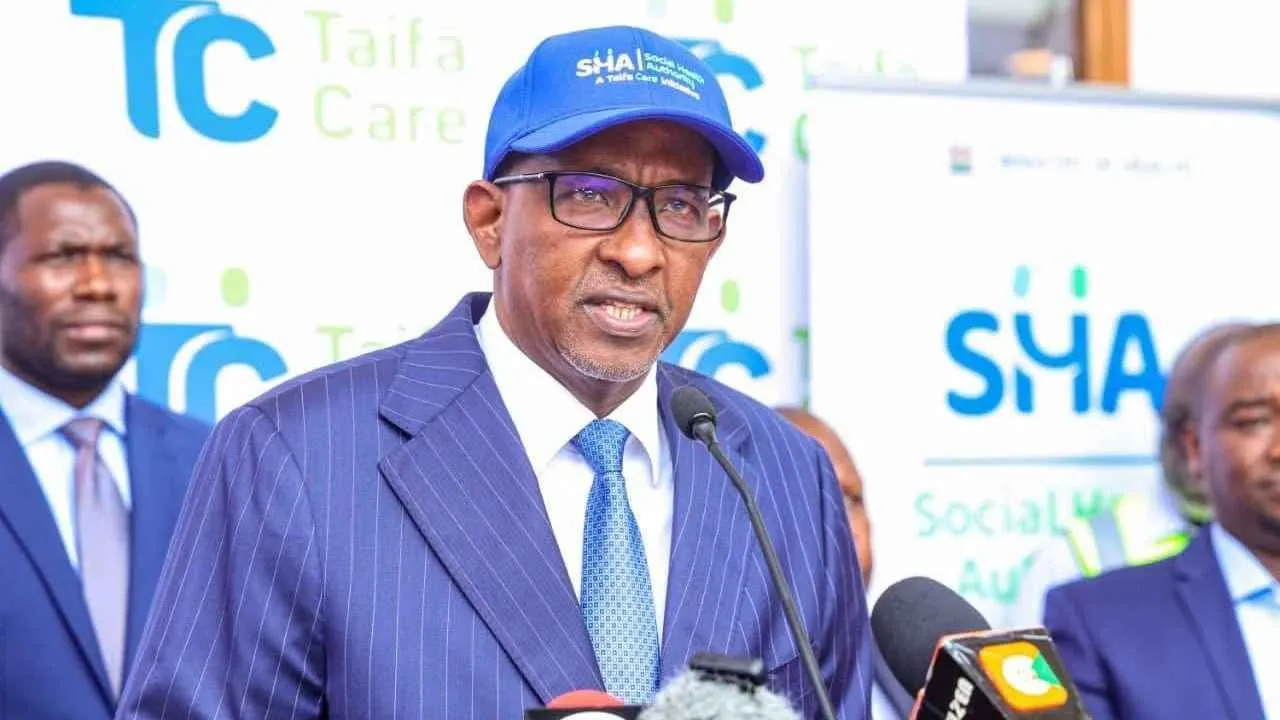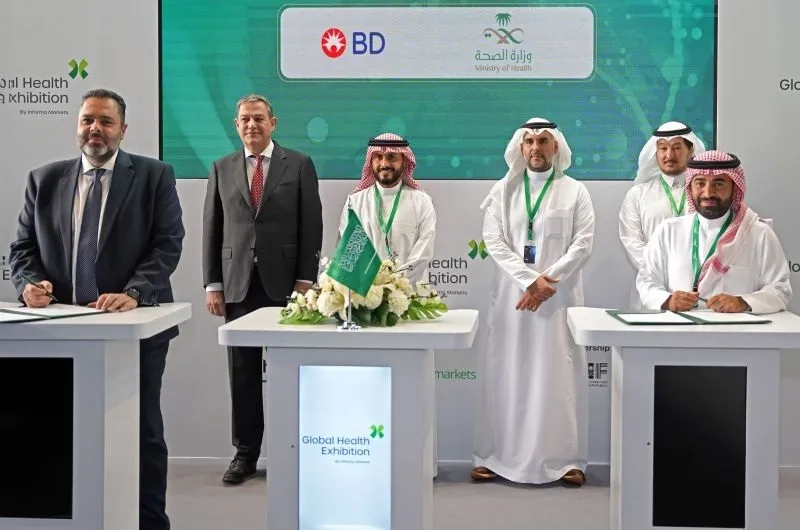In a dramatic escalation, private and faith-based hospitals across Kenya have suspended services for beneficiaries under the Social Health Authority (SHA) scheme, demanding urgent government intervention over unpaid claims and system failures. The Rural and Urban Private Hospitals Association (RUPHA) says that until its concerns are addressed, patients enrolled in SHA will need to pay cash.
This standoff threatens to derail Kenya’s universal health coverage ambitions just as the government phases out the old NHIF system. Below is a deep dive into what has led to the current showdown, the risks at stake, and possible paths forward.
Build the future you deserve. Get started with our top-tier Online courses: ACCA, HESI A2, ATI TEAS 7, HESI EXIT, NCLEX-RN, NCLEX-PN, and Financial Literacy. Let Serrari Ed guide your path to success. Enroll today.
Why Private Hospitals Bucked: The Claims Impasse
Massive Backlog & Unpaid Dues
RUPHA claims that private hospitals are owed KSh 43 billion in verified SHA invoices, with another KSh 24 billion under review. Despite these liabilities, SHA reportedly collects only KSh 6 billion monthly, a shortfall that constrains its ability to reimburse providers. (Source: Kenyan Wall Street)
Compounding the issue, providers say SHA is rejecting medical claims worth KSh 10.6 billion without justification, in violation of contractual requirements to issue decisions within 14 days. The delays leave hospitals in limbo, unable to budget or manage cash flow. (Source: Kenyan Wall Street)
RUPHA argues that claim processing is discriminatory and arbitrary, accusing SHA of weaponizing fraud prevention to deny legitimate payments. The association also highlights that SHA has failed to establish the Dispute Resolution Tribunal mandated by law, leaving providers with no formal venue for appeal. (Source: Kenyan Wall Street)
Contractual Breaches & Provider Rights
Under the provider contract, SHA is obligated to clarify rejections within a 14-day window. Hospitals say this requirement has not been honored, contributing to confusion and financial strain. (Source: Kenyan Wall Street)
Further, RUPHA opposed moves to migrate teachers’ and police medical schemes from Minet to SHA until SHA clears its arrears to the defunct NHIF, arguing that scheme consolidation should not penalize providers. (Source: Kenyan Wall Street)
Technology Rollouts Under Fire
A major bone of contention is SHA’s investment in digital systems meant to curb fraud and streamline operations. Providers claim the tech has instead introduced new faults.
- The eClaims system, intended to block ghost facilities, has allegedly rejected valid claims while paying phantom ones, at a purported cost of KSh 5 billion in erroneous payouts. (Source: Kenyan Wall Street)
- The newly unveiled “Track & Trace” pharmaceutical system, priced at KSh 2.5 billion, is being criticized for being duplicative and prematurely deployed. (Source: Kenyan Wall Street)
- A KSh 2.46 billion drug utilization review program launched alongside it has raised questions about duplication, given failed past initiatives. (Source: Kenyan Wall Street)
- SHA had promised a KSh 1.58 billion quality management system, but providers say it’s still missing.
- Training and customer support budgets of KSh 7 billion reportedly mostly went to online sessions, not on-site capacity building. Many public hospital staff still lack adequate skills in the new systems. (Source: Kenyan Wall Street)
These tech gambles have unsettled providers, who argue that SHA invested heavily in systems without ensuring their reliability or integration with legacy claims workflows.
Service Downgrade, Bed Loss & Facility Suspensions
Hospitals also complain of downgrades and removals from SHA’s provider network. RUPHA says about 3,500 maternity beds and over 1,000 delivery beds were erased from the SHA database, especially in rural counties like Mandera, Turkana, Wajir, and Garissa. (Source: Kenyan Wall Street)
These deletions mean facilities lose revenue and patients lose access. For regions already underserved, the consequences are dire.
Additionally, SHA has suspended 40 health facilities across Kenya over suspected fraud, the largest such move since the transition from NHIF began. (Source: Willow Health Media)
The suspensions were justified under Section 48(6) of the Social Health Insurance Act, which allows for suspension of providers that falsify data or defraud the scheme. (Source: Willow Health Media)
Authorities also hinted they may surcharge facilities that received payments based on fraudulent claims during the suspension period. (Source: Willow Health Media)
The Inequality of Claims Payment
According to media reports, 50% of claims from lower-level facilities (Levels 2–4) remain unpaid. Some larger claims, especially inpatient and surgical ones, see payout ratios as low as 10–20%. (Source: Eastleigh Voice)
By end of August 2025, providers had submitted KSh 96.2 billion in claims, but SHA paid only KSh 53 billion — leaving a gap of KSh 43 billion in outstanding reimbursement. (Source: Eastleigh Voice)
RUPHA states that 8 %2⁄5 hundred facilities had claims over KSh 10 million each; 82 of them accounted for KSh 15 billion of pending claims. (Source: Kenyan Wall Street)
One decision can change your entire career. Take that step with our Online courses in ACCA, HESI A2, ATI TEAS 7, HESI EXIT, NCLEX-RN, NCLEX-PN, and Financial Literacy. Join Serrari Ed and start building your brighter future today.
The Cash Crunch and Operational Strain
RUPHA says hospitals can no longer absorb extended delays or massive outstanding liabilities. Many are operating under extreme financial stress:
- Some have delayed or defaulted on staff salaries and supplier payments
- Others are reducing service offerings or cutting certain high-cost procedures
- In severe cases, threat of closures looms if continued cash flow does not stabilize
One provider survey noted that nearly half of Primary Health Care (PHC) facilities accredited under SHA had received no payments in Q1 2025, while only 20% got full reimbursement. (Source: Kenyan Wall Street)
Facilities report resorting to debt, court claims by suppliers, threats of assets being auctioned, or staff layoffs. (Source: Kenyan Wall Street)
Responses from Government & SHA
The government has attempted to deflect blame by pointing to fraud, ghost clinics, and inefficiencies inherited from NHIF. In a statement, Health CS Aden Duale said SHA will sponsor 2.2 million vulnerable Kenyans, paying for 558,000 households, and rolled out a list of 36 medical services eligible for overseas treatment under SHA. (Source: Eastleigh Voice)
SHA is capping overseas treatment claims at KSh 500,000, with room for negotiation after accreditation with foreign providers. (Source: Eastleigh Voice)
Some defense is also taken in the tech narrative: the government claims systems like Track & Trace are critical to preventing future leakages in drug supply and billing.
However, providers say acceptance is low while trust is weak.
Key Risk & Consequence Scenarios
- Collapse of Universal Health Ambitions
Private hospitals are integral to Kenya’s healthcare capacity. Their withdrawal could strand millions, especially in areas where public health infrastructure is weak. - Loss of Access in Rural & Frontier Counties
Counties like Mandera, Turkana, and Wajir may suffer severe service gaps if providers within them are downgraded or suspend services. - Legal & Constitutional Challenges
Arbitrary downgrades or claim rejections may violate administrative fairness principles under the Kenyan Constitution and the Fair Administrative Action Act. - Loss of Investor and Donor Confidence
Backlogs, tech failures, and ambiguous dispute resolution processes may deter health sector investment or grants that tie disbursements to system integrity. - Moral Hazards & Gaming the System
If hospitals fear rejection, they may increase up-front billings, limit service packages, or refuse complex cases—leading to formal-sector exclusion for certain treatments. - Fragmentation of Health Coverage
Patients may migrate to unregulated cash-based clinics or bypass SHA entirely. This fragmentation undermines pooling, risk sharing, and equity.
What Should Happen Next?
Immediate Stabilization
- SHA should prioritize payment of claims under KSh 10 million, in line with earlier presidential directives.
- Providers argue that claims > KSh 10 million should receive verification within 7 days and immediate payment. (Source: Kenyan Wall Street)
- Reactivate the Dispute Resolution Tribunal to allow providers to appeal downgrades, suspensions, or rejections.
Operational & Process Fixes
- Rebuild trust in the eClaims and tracking systems, auditing false rejections and validating genuine submissions.
- Consolidate system platforms and reduce redundant expenditure on overlapping tech projects.
- Publish a transparent claims dashboard / invoice tracking portal accessible to hospitals. (As suggested earlier by faith-based consortia) (Source: CHAK / Faith-based providers)
- Build capacity in regional SHA offices and devolve decision making to reduce centralized bottlenecks.
Policy & Legal Safeguards
- Enforce timely statutory clearances — claims must be accepted, rejected, or clarified within prescribed timelines.
- Implement stricter governance and accountability in SHA’s spending and vendor procurement.
- Provide bridge funding or relief to providers on the verge of collapse.
Longer-Term Reforms
- Review the provider network architecture — ensure rural coverage is sustained.
- Expand beneficiary payment reforms (e.g. “Lipa SHA Pole Pole”) to widen premium collection base and reduce funding volatility.
- Engage audit and forensic reviews to root out ghost facilities, billing fraud, and leakages.
- Reinforce AML / oversight in high-risk claim lines (e.g. expensive surgeries, overseas referrals).
Signs to Watch
- Resolution of the KSh 43 billion backlog
- Payments issued within 14 days per contract
- Reactivation or establishment of the Dispute Tribunal
- Public posting of provider payments and rejection rationale
- Reduction in provider suspensions after tech fixes
- Return of private hospitals to SHA servicing under confidence rebuild
If SHA cannot stabilize relations with providers, the entire health coverage model risks collapse — particularly as funding, infrastructure, and human resources are stressed.
Ready to take your career to the next level? Join our Online courses: ACCA, HESI A2, ATI TEAS 7 , HESI EXIT , NCLEX – RN and NCLEX – PN, Financial Literacy!🌟 Dive into a world of opportunities and empower yourself for success. Explore more at Serrari Ed and start your exciting journey today! ✨
Track GDP, Inflation and Central Bank rates for top African markets with Serrari’s comparator tool.
See today’s Treasury bonds and Money market funds movement across financial service providers in Kenya, using Serrari’s comparator tools.
Photo source: Google
By: Montel Kamau
Serrari Financial Analyst
24th September, 2025
Article, Financial and News Disclaimer
The Value of a Financial Advisor
While this article offers valuable insights, it is essential to recognize that personal finance can be highly complex and unique to each individual. A financial advisor provides professional expertise and personalized guidance to help you make well-informed decisions tailored to your specific circumstances and goals.
Beyond offering knowledge, a financial advisor serves as a trusted partner to help you stay disciplined, avoid common pitfalls, and remain focused on your long-term objectives. Their perspective and experience can complement your own efforts, enhancing your financial well-being and ensuring a more confident approach to managing your finances.
Disclaimer: This article is for informational purposes only and does not constitute financial advice. Readers are encouraged to consult a licensed financial advisor to obtain guidance specific to their financial situation.
Article and News Disclaimer
The information provided on www.serrarigroup.com is for general informational purposes only. While we strive to keep the information up to date and accurate, we make no representations or warranties of any kind, express or implied, about the completeness, accuracy, reliability, suitability, or availability with respect to the website or the information, products, services, or related graphics contained on the website for any purpose. Any reliance you place on such information is therefore strictly at your own risk.
www.serrarigroup.com is not responsible for any errors or omissions, or for the results obtained from the use of this information. All information on the website is provided on an as-is basis, with no guarantee of completeness, accuracy, timeliness, or of the results obtained from the use of this information, and without warranty of any kind, express or implied, including but not limited to warranties of performance, merchantability, and fitness for a particular purpose.
In no event will www.serrarigroup.com be liable to you or anyone else for any decision made or action taken in reliance on the information provided on the website or for any consequential, special, or similar damages, even if advised of the possibility of such damages.
The articles, news, and information presented on www.serrarigroup.com reflect the opinions of the respective authors and contributors and do not necessarily represent the views of the website or its management. Any views or opinions expressed are solely those of the individual authors and do not represent the website's views or opinions as a whole.
The content on www.serrarigroup.com may include links to external websites, which are provided for convenience and informational purposes only. We have no control over the nature, content, and availability of those sites. The inclusion of any links does not necessarily imply a recommendation or endorsement of the views expressed within them.
Every effort is made to keep the website up and running smoothly. However, www.serrarigroup.com takes no responsibility for, and will not be liable for, the website being temporarily unavailable due to technical issues beyond our control.
Please note that laws, regulations, and information can change rapidly, and we advise you to conduct further research and seek professional advice when necessary.
By using www.serrarigroup.com, you agree to this disclaimer and its terms. If you do not agree with this disclaimer, please do not use the website.
www.serrarigroup.com, reserves the right to update, modify, or remove any part of this disclaimer without prior notice. It is your responsibility to review this disclaimer periodically for changes.
Serrari Group 2025












